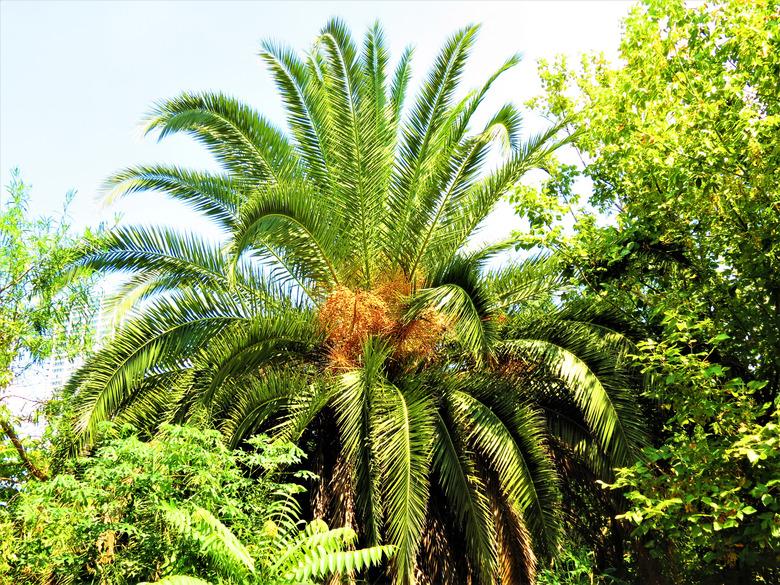How To Tell If Your Queen Palm Tree Is Still Alive
If you are looking for an elegant, lofty palm tree, the queen palm (Syagrus romanzoffiana) might be the place to start. They grow tall quickly, with feathery foliage topping their smooth trunk. Their fruit and flowers are also attractive. These are the hardiest of the tropical palms, but they do sometimes succumb to winter weather or disease.
Meet the Queen Palm
The arching, feathery leaves and smooth gray trunk of queen palms have made them a favorite landscape tree in the warmest areas of the country. These palms thrive in U.S. Department of Agriculture plant hardiness zones 9 through 11.
They can grow to 50 feet tall with a spread of 25 feet, and they grow showy flower plumes in summer that develop into bright orange fruit. These trees are not hard to find in commerce because of their elegant stature, fast growth, and widespread availability.
These regal palms have a smooth gray trunk that can reach up to 50 feet tall, and they are topped with a large canopy of feathery foliage. In summer, queen palms produce large plumes of tiny flowers that mature into vibrant orange fruits by winter, adding to their tropical luster. However, fruit drop can be an issue since fruit clusters can weigh up to 1,000 pounds.
Care for Your Queen Palm
No plant is perfect, and the elegant queen palm also has its issues. These palms require pruning. They do not drop their dead fronds like other species, and every one must be cut off manually. They are also vulnerable to a variety of nutrient deficiencies, a problem that is pronounced and sometimes lethal in alkaline soil. In addition, the palms do not like winter cold. They are native to Brazil and can't always make it through an American winter.
Planting a queen palm in an appropriate location is the first step in caring for it. Pick a site with at least six hours of direct sunlight and acidic, well-drained soil. If you plant the queen palm in alkaline soil, it is vulnerable to mineral deficiencies. You'll need to give it regular preventive applications of nutrients, like iron, manganese, and potassium, to avoid the worst. The tree needs regular irrigation, but the ground must be allowed to dry between waterings. Soil that is too wet will kill it. The tree will also suffer damage if the temperatures drop or if it is hit by cold winds.
Determining Whether a Queen Palm Is Alive
If a bad winter storm or unexpected freeze impacts your area, your queen palm fronds may wilt. If this occurs during the growing season, the palm is most likely dead. If this appears in winter, wait and see what spring brings.
When fronds of the queen palm turn black, the tree probably has a nutritional deficiency (manganese). If you fertilize immediately, it is possible to save the tree. If all the fronds are black, it is probably too late.
Look at the crown of the tree, which is the very center of the top of the canopy where new leaves grow. If no green shoots appear and there is no green on any frond, the tree is likely dead. Try tugging on a central frond. If it comes out easily, it is a bad sign. If others also come out easily without resistance, the tree is likely dead.
